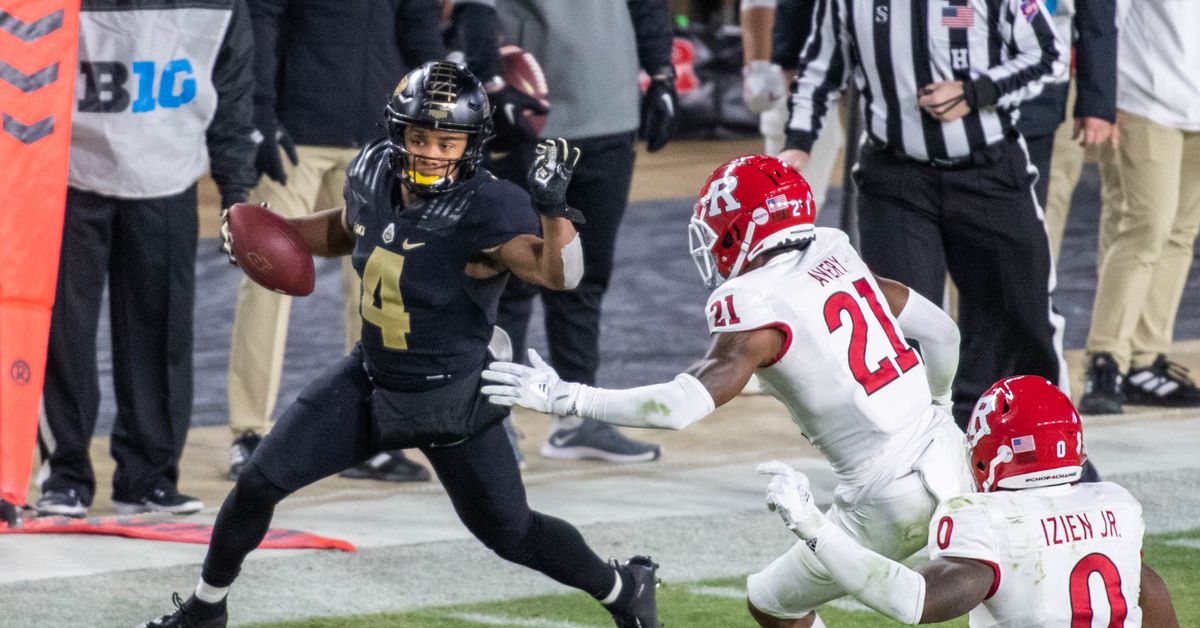
After winning games against Iowa and Illinois to start the 2020 season, Purdue is now looking to break a three-game losing streak this Saturday against the Huskers. Against Iowa, David Bell’s third touchdown catch of the game with just two minutes left in the game proved to be the game winner. The next weekend, the COVID-limited Illini scored twice in the fourth quarter to trim what looked like a Boilermaker blowout victory into a 31-24 final score. But after COVID forced Wisconsin to cancel their week three game against the Boilermakers, Northwestern held Purdue to just two yards rushing for a 27-20 victory. A week later, the Big Ten referees began a weekend of Cob-winning blown calls by hallucinating an offensive pass interference call against Payne Durham to erase what should have been a last-minute game-winning touchdown pass for Purdue. Minnesota sealed the disputed victory on the next play with an interception to give the Gophers a disputed 34-31 victory. Last weekend, Purdue blew a ten point halftime lead to Rutgers, who was playing without injured former NU quarterback Noah Vedral, as the Boilermakers lost their third straight game 37-30.
Star receiver Ron’dale Moore opted out then opted back into playing this season, but then sat out the Boilermakers first three games. In his two games, he’s caught 22 passes for 192 yards. David Bell has caught 43 passes for 493 yards and seven touchdowns. Zander Horvath has staked his claim as the Boilermakers top running back, rushing for 421 yards and two touchdowns and catching 26 passes for 266 yards.
Aiden O’Connell started Purdue’s first three games of the season, completing 65% of his passes with seven touchdowns and averaging 305 yards per games. O’Connell has missed the last two games due to injury, with Jack Plummer playing. Plummer has completed 71% of his passes with five touchdowns, averaging 302 yards per game. Each has thrown two interceptions this season. Plummer is the more mobile quarterback, averaging 4 yards a carry; O’Connell stays in the pocket and loses 5.3 yards on average when he carries the ball.
Purdue ranks sixth in the Big Ten in scoring defense (28.4 pts. per game) and eighth in total defense (406 yards per game). New Purdue defensive coordinator Bob Diaco (name sound familiar?) is struggling to defend the pass, ranking 11th in pass defense, giving up 254 yards per game through the air. The Boilermakers are dead last in the Big Ten with just four sacks in five games. Two of those sacks were by defensive end George Karlaftis, who’s out for the next two week after testing positive for COVID-19.
Linebackers Derrick Barnes and Jaylan Alexander lead Purdue with 45 and 41 tackles respectively. Juco transfer DaMarcus Mitchell is third with 29 tackles and a team leading six for loss. Safety Cam Allen has two of Purdue’s three interceptions this season.
Scott Frost is 0-2 against Jeff Brohm and Purdue; is this the year that the Huskers break through against the Boilermakers? Neither team has been playing outstanding football as of late, so it would seem that whichever team makes fewer mistakes would come out ahead in this one.
Below, you’ll find the preseason review of the Purdue Boilermakers, a game that was originally supposed to be played three months ago, for reference:
The teams in the Big Ten’s west division certainly aren’t nearly the same as they were ten years ago when Nebraska was making the jump away from Texas and the Big XII. Yes, Wisconsin is still Wisconsin, but the rest? Minnesota was bad, while Northwestern was inconsistent. And Iowa, Illinois and especially Purdue were trending downward at the time. So bad that a new nickname had emerged for the Boilermakers: PurDon’t.
All that changed once Jeff Brohm took over, as Purdue went bowling the first two seasons under Brohm. But the 2019 season came to a crashing end on one first quarter play against Minnesota. As quarterback Elijah Sindelar’s collarbone broke as he was being driven into the ground, wide receiver Rondale Moore’s hamstring gave out. Neither player returned as the Boilermakers stumbled to a 4-8 record.
While Sindelar was eligible to return this season, he announced in December he was moving on from football. So that leaves sophomore Jack Plummer (6’5” 220 lbs), junior Aidan O’Connell (6’3” 210 lbs.) or graduate transfer Austin Burton (6’2” 197 lbs.) to take the snaps in 2020. Burton is scheduled to arrive in July after he graduates from UCLA; he started one game for the Bruins last season against Oregon State. He completed 68% of his passes for 365 yards and a touchdown and averaged 4.3 yards per carry on 23 carries. Realizing that he wasn’t going to beat out Dorian Thompson-Robinson in Westwood, he looked elsewhere during the pandemic lockdown, choosing Purdue over Colorado, Vanderbilt and Hawai’i. Plummer probably could be considered the presumed leader in the quarterback race; he was the starter until breaking his ankle in the fourth quarter against Nebraska. Last season, Plummer completed nearly 60% of his passes for 1,603 yards and 11 touchdowns with eight interceptions. Plummer was not a running threat – except against Nebraska – last season, losing five yards on 50 carries prior to the game against the Huskers. O’Connell completed 63% of his passes for 1,101 yards and eight touchdowns with four interceptions. O’Connell is not a rushing threat either, losing nine yards rushing last season.
Ron’dale Moore (5’9” 180 lbs.), however, should be back at 100%, and that’s scary news for the rest of the Big Ten. In his Freshman All-American season, Moore caught 112 passes for 1,258 yards and 12 touchdowns. Last season in his 3 1⁄4 games, he caught 29 passes for 387 yards and two touchdowns. After Moore went down, sophomore David Bell (6’2” 210 lbs.) filled much of Moore’s missing production, catching 86 passes for 1,035 yards and seven touchdowns. With Moore’s return, this might be the Big Ten’s most dangerous receiving corps. Senior Jackson Anthorp (5’11” 190 lbs.) and sophomore Amad Anderson, Jr. (5’11” 175 lbs) also return after catching 37 and 31 passes respectively last year. At tight end, sophomore Payne Durham (6’5” 255 lbs.) should fill the hole left by the departure of second leading receiver Brycen Hopkins. Durham only caught nine passes last season as a freshman backup, but four of them were for touchdowns.
At running back, sophomore King Doerue (5’10” 210 lbs.) and junior Zander Horvath (6’3” 230 lbs.) return. Doerue rushed for 451 yards (3.5 yards per carry average) and five touchdowns last year; Horvath rushed for 377 yards (4.8 yards per carry) and two touchdowns. Horvath exploded in the final game of the 2019 season against Indiana, gaining 164 yards, averaging over 7 yards per carry. Incoming freshman Tirek Murphy (6’0” 220 lbs.) is a four-star recruit that likely should challenge for some playing time this season. Without a spring practice to base things on, it’s tough to gauge where the depth chart might be, but I wouldn’t be surprised to see Horvath or possibly even Murphy being the primary ball carrier to open the season.
Four starters return from last season’s young and not terribly effective offensive line. Senior left tackle Grant Hermanns (6’7” 295 lbs.) has been Purdue’s best offensive lineman the last three seasons. At left guard, junior Mark Stickford (6’5” 295 lbs.) is probably the most likely starter after a strong performance in the second half of the season. UTEP graduate transfer Greg Long (6’4” 295 lbs.) would seem to a likely candidate to start somewhere; Long started eight games at right tackle for the Miners last season after missing most of the last two seasons due to injury. Expect Long to have two seasons of eligibility with the Boilermakers remaining
Purdue was pretty bad on defense last season, finishing 12th in the Big Ten in scoring defense (30.6 points per game) and 13th in total defense (436.3 yards per game; worse than Rutgers). So Nick Holt is out as defensive coordinator, replaced by the man who refuses to clip his lavalier microphone to his shirt, former Nebraska defensive coordinator Bob Diaco. In all fairness to Diaco, I think he was ill-prepared for the dysfunction he found when he arrived in Lincoln. We know the players checked out on the program that season, and frankly, I’m not sure he didn’t check out himself after realizing the “strain”.
Purdue’s defensive line should be better in 2020 if senior nose tackle Lorenzo Neal (6’3” 315 lbs.) returns this fall. Neal missed the 2019 season with an ACL injury after earning honorable mention all-Big Ten honors in 2018. On one side, sophomore defensive end George Karlaftis (6’4” 265 lbs.) will be looking to build on his freshman All-American season in 2019, where he finished third on the team in tackles with 54 (17 for a loss). The other end position probably will go to a sophomore, either Branson Deen (6’2” 265 lbs.) or Jack Sullivan (6’5” 270 lbs.). Of note, despite limited playing time as a freshman, Deen was second on the Purdue defense with five passes swatted down.
With Diaco bringing his 3-4 lineup to West Lafayette, senior Derrick Barnes (6’1” 245 lbs.) will slide back to an inside linebacker role from his previous “LEO” hybrid end/linebacker position. Barnes had 92 tackles as a full-time sophomore linebacker in 2018. He’ll match up with junior Jaylan Alexander (6’1” 235 lbs.) on the inside, who had 41 tackles (6 for a loss) last season as a top reserve. On the outside, it’s converted safety Jalen Graham (6’1” 215 lbs.), who had 37 tackles last season as a true freshman. On the other side, it seems junior college transfer DaMarcus Mitchell (6’3” 255 lbs.) seems to be the leading candidate to go.
Junior cornerback Dedrick Mackey (5’11” 185 lbs.) is the most experienced player returning in the Boilermakers secondary, totalling 41 tackles last season. But with UConn graduate transfer safety Tyler Coyle (6’1” 205 lbs.) arriving this summer, Coyle will provide more production and experience. The leading tackler for UConn the last two seasons with 260 career tackles, he’ll immediately add depth. Sophomore Cory Trice (6’3” 215 lbs.) switched from safety to corner during fall camp and blossomed late in the season.
I think the keys to Purdue’s 2020 season come down to the health of Rondale Moore and Lorenzo Neal; if back to where they left off in 2018, Purdue immediately become a threat to challenge in the Big Ten’s west division. If they aren’t, though, it could be another rough season as there aren’t any gimmes on the schedule – other than Rutgers. The non-conference schedule features two ten-plus win teams (Memphis and Air Force) plus a Boston College team that went bowling. Purdue may point to this opening game as a key this offseason to getting back to bowl eligibility – or more.

Must See
-


Football
/ 1 day agoWhite Team Triumphs in Spirited Nebraska Spring Game
Lincoln, NE – In a closely contested Nebraska Spring Game, the White team edged...
-
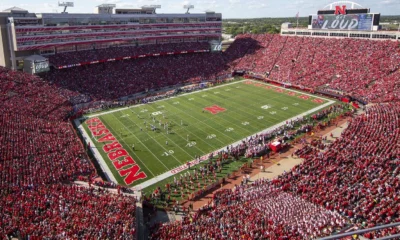

Featured
/ 4 days agoFan Guide to the Red-White Spring Game
Nebraska fans are set for a thrilling Saturday at Memorial Stadium for the annual...
-


Baseball
/ 1 week agoHuskers Command Series Victory with a Resounding Win
In a spectacular show of force, Nebraska equaled its highest run tally of the...


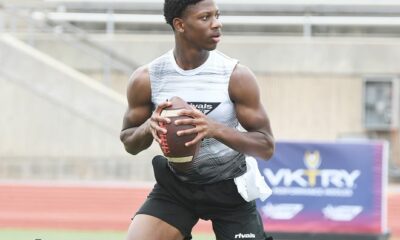







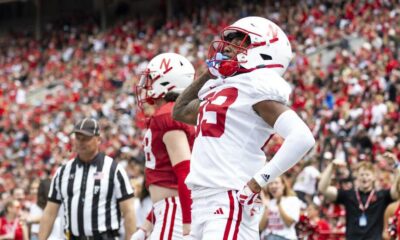

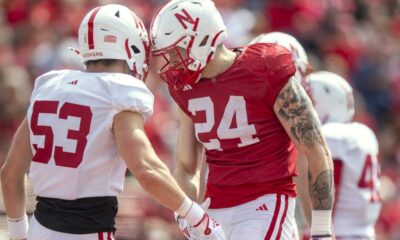







You must be logged in to post a comment Login